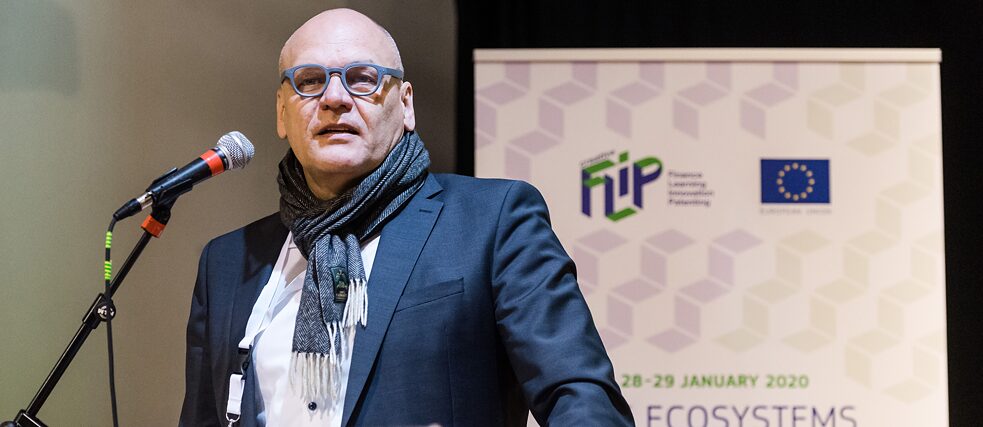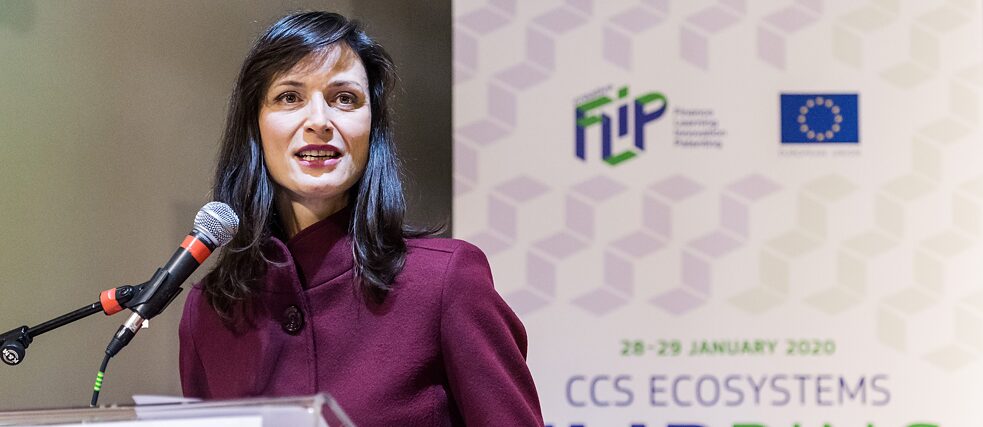Flipping the Odds
Driving force for social cohesion

On 28 and 29 January, a conference at the interface of culture, law and industry took place at the Brussels creative hub La Vallée. The event was organised by the EU project Creative FLIP and the European Commission. More than 230 stakeholders and decision-makers from the public and private sectors from all over Europe as well as actors from the cultural and creative industries took part.
By Tanya Wittal-Düerkop / Benjamin Panten
“Europe’s cultural and creative industries are at the top of my political agenda,” said European Commissioner for Innovation, Research, Culture, Education and Youth Mariya Gabriel at the Creative FLIP conference. Creative FLIP started in February 2019 with the aim of tapping growth potential for the European cultural and creative industries as well as creating appropriate and sustainable framework conditions in the areas of finance, learning, innovation and patenting for the cultural and creative industries in Europe. Growth and development capacities are to be strengthened through improved access to finance and intellectual property rights. The conference provided the opportunity to present the progress made in these areas since 2019 not only to political bodies, but also to a broad public and to coordinate further joint steps. Johannes Ebert, the secretary-general of the Goethe-Institut, emphasised the efforts to continue to work towards the expansion of a common cultural, European region, noting, “For us, the cultural and creative industries are important not only from an economic point of view, but above all with a view to their social impact as a driving force for social cohesion in a modern and innovative Europe.”
Location and future factor
Everyone agrees that the cultural and creative sector has experienced an incredible boom in the past ten years. Expectations on the industry are high. Its cross-sectoral potential should generate synergy effects and positive impulses for sustainable jobs, social cohesion and innovation. Therefore, it also plays an increasingly important role for politics, as the 2018 European Cultural Agenda or programmes such as Creative Europe show. This is where Creative FLIP comes in with a wide range of sensitisation, networking, competence and training measures, which are implemented by the Creative Hub Network and the Goethe-Institut. The conference acted as a mid-term review of the programmes that are still running until mid-2021, offered deep insights into tangible practical examples as well as transfer of skills and methods, and also created a creative, free-spirited atmosphere for proactive networking. The audience at the Flipping the Odds conference. | Photo (detail): Tanya Wittal-Düerkop
The audience at the Flipping the Odds conference. | Photo (detail): Tanya Wittal-Düerkop
Diversity, fragmentation, condensation
Statistics and studies prove that the European creative and cultural sector is booming. Nevertheless, it suffers more than other branches of industry from restrictions in its particularly fragmented fields of action. One of the issues that was often addressed at the conference was the small-scale nature of the sector, which is an obstacle to organised and concerted representation of interests across the EU. On the other hand, the industry is subject to strong condensation phenomena and constant changes in the markets, especially in the area of platform and streaming services. This is a major threat to its own framework for action and to EU cultural diversity in general. “To truly support creators we need to build bridges, feed each other’s creativity – learn from each other.” Mariya Gabriel, EU Commissioner for Innovation, Research, Culture, Education and Youth. | Photo (detail): Geert Vanden Wijngaert
“To truly support creators we need to build bridges, feed each other’s creativity – learn from each other.” Mariya Gabriel, EU Commissioner for Innovation, Research, Culture, Education and Youth. | Photo (detail): Geert Vanden Wijngaert